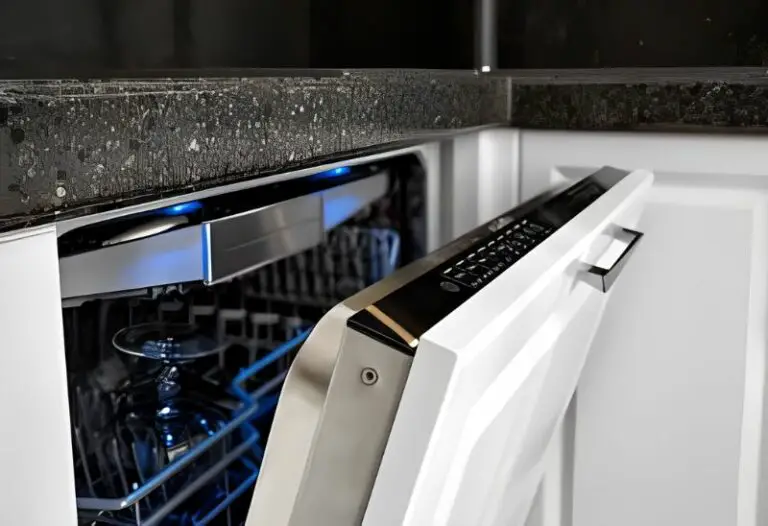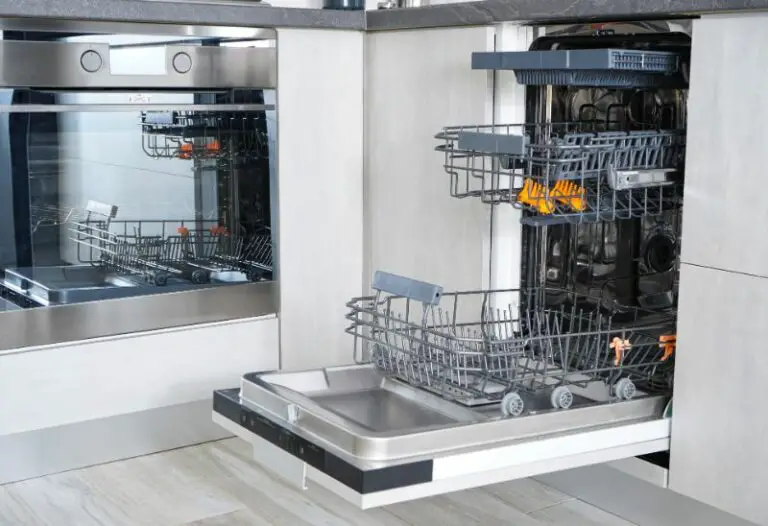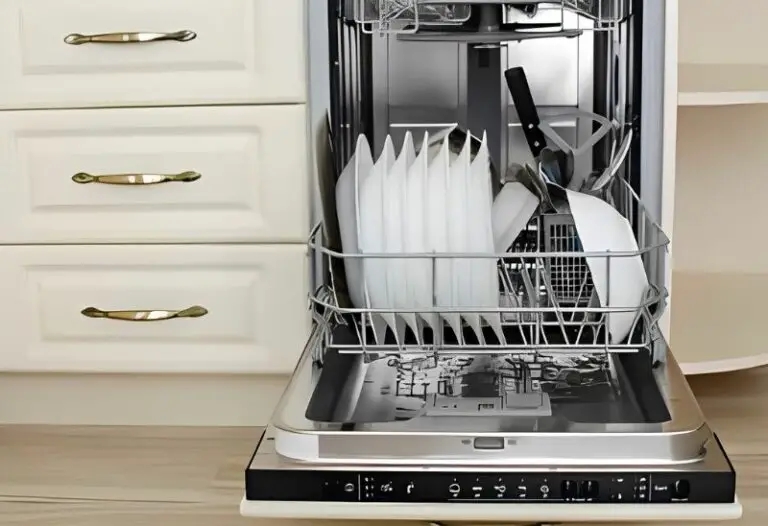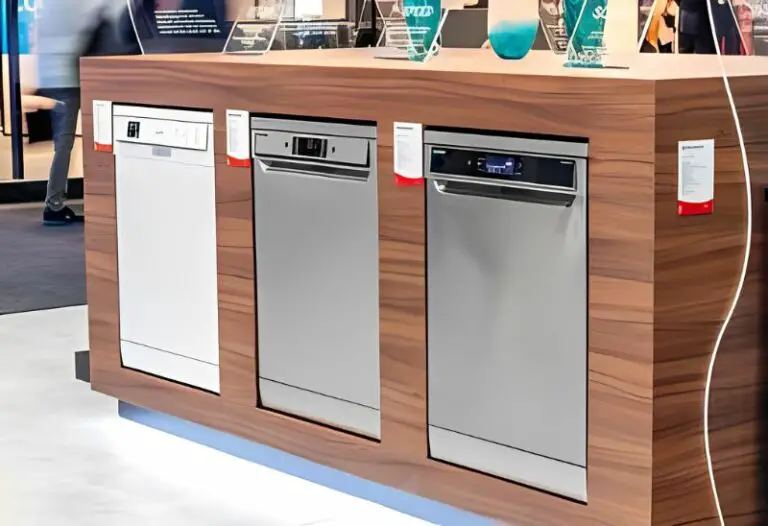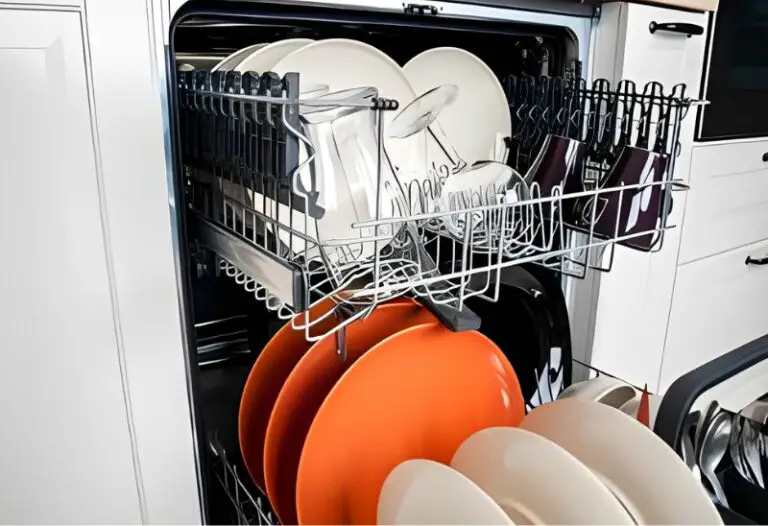When Did Dishwashers Become Common? A Journey From Luxury to Necessity
Imagine a time when the tedious task of washing dishes by hand was a daily reality for everyone. But when did the convenience of the dishwasher become a staple in homes? This article dives into the journey from hand-washing to the modern dishwasher, charting the innovations that made this appliance common in households.
From a wooden hand-cranked invention in 1850 by Joel Houghton to the more sophisticated designs later developed by Josephine Cochrane, dishwashers have evolved dramatically. Electric dishwashers emerged in the early 20th century, yet it wasn’t until the prosperous post-war era that they began appearing commonly in homes, marking a significant shift in domestic life.
Key Takeaways
- The first mechanical dishwasher was invented in 1850.
- Widespread adoption of dishwashers in homes began post-World War II.
- Dishwashers have had a profound impact on domestic efficiency and lifestyle.
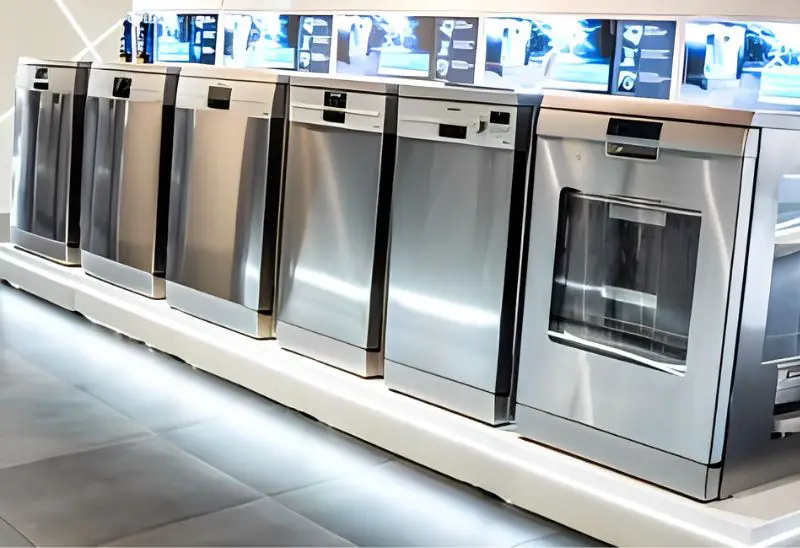
From Early Inventions to Slow Adoption (Pre-1950s)
Imagine your kitchen without a dishwasher. Now, let’s journey back to the mid-1800s when Joel Houghton patented the very first mechanical dishwashing device. In 1850, what he introduced was a simple, hand-cranked dishwasher. It was quite basic; imagine rotating a handle to splash water on dishes!
By 1886, an enterprising socialite, Josephine Cochrane, revolutionized Houghton’s invention. She wasn’t just a socialite but also someone passionate about innovation. With the help of her mechanic, George Butters, she created a more effective machine that used a rotating sprayer powered by steam. Instead of washing dishes by hand, this device worked by using hot water—and it was the first of its kind!
Here’s where it gets interesting:
- Wealthy households and commercial institutions like restaurants and hotels were the only ones to catch on. You see, for a long time, these machines remained a luxury many could not afford.
- Manufacturers like Miele started emerging in the early 20th century with their versions of the dishwasher, adding features and improving reliability.
- These early dishwashers often included a copper boiler to heat water to the right temperatures, which made them somewhat bulky. The goal was to maintain water hot enough to clean, but not so hot as to damage the crockery.
By the 1920s and 30s, electric top-loading dishwashers started appearing. But despite these advancements, they were far from a common sight in homes. It took a fair amount of time before dishwashers would evolve from these early models to the efficient, affordable, reliable appliances that would become a kitchen staple in the coming decades. For now, having a dishwasher was quite the status symbol, making you one of the wealthy few.
Post-War Boom and the Rise of the Dishwasher (1950s-1970s)
In the 1950s, after World War II, you’d notice a significant change in American households and their kitchens. The economic growth during the post-war boom made automatic dishwashers more than just a fancy gadget for the wealthy.
- The 1950s brought standardization in dishwashers, promoting mass production which in turn lowered costs.
- Innovation in design allowed these machines to fit neatly into kitchen cabinetry, complimenting the modern home aesthetic.
Josephine Cochrane was instrumental in dishwasher development and her company eventually became part of KitchenAid, a popular appliance brand today. These machines saved time, an important consideration during an era where marketing increasingly highlighted convenience for housewives.
By the 1960s, companies like Miele were pushing boundaries with the first fully-automatic dishwasher, further improving the cleaning experience. Coming into the 1970s, dishwashers were no longer seen as a luxury item but a part of the modern kitchen. This shift was significant in restaurants and hotels as well, where high-volume cleaning was essential.
Notable Advances:
- Early models required manual filling, but now they were connected to indoor plumbing.
- Hot water integration became a standard feature for effective cleaning.
By the time you reached 1975, more than 50% of American homes boasted a dishwasher. This period marked a transition from the dishwasher being a novel invention to a common feature of modern kitchens, enhancing the landscape of kitchen appliances for good. The features that enticed buyers reflected the society’s increasing pursuit of convenience and efficiency.
Factors Behind the Dishwasher’s Rise
Following World War II, you might say the world experienced an economic upturn, leading to greater disposable income. Think of it like getting an extra allowance; suddenly, you could afford nicer things. This economic prosperity paved the way for dishwashers to move from a luxury to a common household item.
At the same time, more women were entering the workforce and balancing jobs with household chores. This meant that families started valuing labor-saving devices more than before—after all, who doesn’t like a bit more free time? Dishwashers promised exactly that, turning the tide of chores from a time-consuming task to a simple button push.
Convenience became a buzzword as everyone was looking for ways to enjoy more leisure and family time. Dishwashers offered a hand-free approach to cleaning dishes, making them a great friend in the kitchen. As the cultural landscape shifted, the appeal of a dishwashing helper steadily grew:
- Dishware: No need to worry about chips or hand-washing fragile plates.
- Cleaning and Drying: Say goodbye to towel drying with an in-built drying element.
- Food Disposal: Integrated units meant less pre-cleaning.
With technological advancements, dishwashers got smarter too:
- Soil Sensors: These detect how dirty your dishes are.
- Variable Washing Time & Temperature Control: Customized cleaning for different levels of dirt.
- Stainless Steel Tubs: Longer life and better heat retention for drying dishes.
Design played a big role as well:
- Standardized Sizes: Fitting into kitchens became a breeze.
- Quieter Performance: Thanks to sound dampening, they became less obtrusive.
In a nutshell, dishwashers transformed from a bulky, noisy luxury to a sleek, silent, and essential kitchen pal. Brands kept adding impressive features like advanced racks and energy conservation settings. Whether it was dealing with hard water or ensuring your glasses come out spotless, dishwashers adapted, becoming as common in homes as the refrigerator.
Dishwashers in the Modern Era (1980s-Present)
Since the 1980s, you’ve witnessed remarkable advancements in dishwasher technology. Progress in microchip and touchpad controls has transformed these appliances from simple machines to complex, energy-efficient tools designed to address both hygiene and environmental concerns.
- Features and Innovations: The modern era brought a bevy of features, like rotating sprayers, adjustable racks, and water jets capable of altering water pressure for maximum cleaning. Brands like Bosch, Maytag, and Miele have been at the forefront, pushing the envelope in terms of luxury and innovation.
- Smart Appliances: Integration with household technology isn’t sci-fi anymore. Your dishwasher can communicate with smart home systems, and some even respond to voice commands.
- Energy and Water Conservation: Here’s how modern dishwashers care for the planet:
- Energy-saving cycles: Making clean dishes with less impact.
- Water conservation: Advanced sensors adjust water usage according to load size, a critical step given increasing environmental concerns.
As these technologies became standardized, dishwashers saw a series production that placed them within the reach of more households, leading to a significant increase in domestic use.
- Health and Hygiene: Enhanced sanitation features like high-temperature washes have made dishwashers vital for your health and hygiene.
- Global Reach: The popularity of dishwashers has expanded well beyond the U.S. and Europe. You’ll find them making strides in emerging markets like China and India.
By embracing these innovations, dishwasher usage in developed countries has soared, with penetration rates climbing over 75%. Now, whether you’re a high-tech enthusiast or eco-conscious consumer, there’s a dishwasher that fits your lifestyle perfectly.
Beyond Dishwashers: The Impact on Society
Have you ever thought about how dishwashers do more than just clean dishes? Sure, dishwashers have made washing up after dinner a lot easier, but their impact on society is surprisingly big!
Gender Roles
- Equality at Home: Before dishwashers, a lot of time was spent scrubbing pots and pans. Nowadays, with a push of a button, dishes are done, giving everyone in the family more time to relax or work on what matters to them, helping to balance the chores at home.
Family Dynamics
- Quality Time: What if you had extra time every day? Families do, thanks to dishwashers. With no pile of dishes in the sink, you can play games, watch a movie, or just chat with your family.
Economic Impact
- Job Creation: Think about this – for every dishwasher in a home, someone had to design it, make it, sell it, and repair it. That’s a lot of jobs!
Environmental Impact
- Saving Resources: Modern dishwashers can be water and energy savers. Imagine saving up to 1,000 gallons of water a year just by using a dishwasher instead of washing by hand!
Here’s how dishwashers stack up today:
- 75% of American households own a dishwasher.
- You can use way hotter water in a dishwasher than you could with your hands for better hygiene.
So, dishwashers aren’t just about getting clean dishes; they’re about making life a little easier, fairer, and even greener! Isn’t it fascinating how one household appliance can make such a big splash?
Frequently Asked Questions
When discussing the history of home appliances, you might wonder about the journey of the dishwasher from obscurity to a kitchen necessity. This FAQ aims to shed light on when dishwashers became commonplace in American homes, their initial designs, affordability, and technological progress over the years.
What year marks the widespread adoption of dishwashers in American households?
The 1960s are recognized as the era during which dishwashers became a staple in American homes. Manufacturers recognized the growing demand and rose to meet it, causing dishwashers to shift from a luxury item to an essential household appliance.
How was the first dishwasher model designed, and who was behind its invention?
The early success of manual dishwashers can be credited to Josephine Cochrane, who, along with mechanic George Butters, invented a hand-powered dishwasher in 1887. This design was primarily adopted by hotels and restaurants before finding its way into domestic use.
During the 1950s and 1960s, how common were dishwashers in the United States?
Initially, dishwashers remained a luxury item into the 1950s, but by the 1970s, they transitioned to a more necessary home appliance. Post-war economic growth allowed more American families to consider adding dishwashers to their homes.
Can you give a brief history of the dishwasher’s development and when the electric version came into play?
Electric dishwashers really started making headway in 1940, with the inclusion of electric drying elements. However, it took until 1960, after Miele introduced the first automated dishwasher, for this appliance to become a practical addition to the average home.
What was the average cost of the earliest dishwashers available to the public?
During their initial release, dishwashers were quite expensive, putting them out of reach for most people. Detailed cost statistics for these early models are not provided, but it is clear that it took several decades before dishwashers were affordable for the typical family.
How have dishwasher technologies evolved since their inception to the modern ‘Dishwasher Siemens’?
From the humble beginnings of Josephine Cochrane’s hand-powered model, dishwasher technology has significantly advanced. Modern dishwashers, like those from Siemens, offer features like energy efficiency, water-saving functions, and complex wash cycles, making them far more efficient and convenient than their predecessors.
